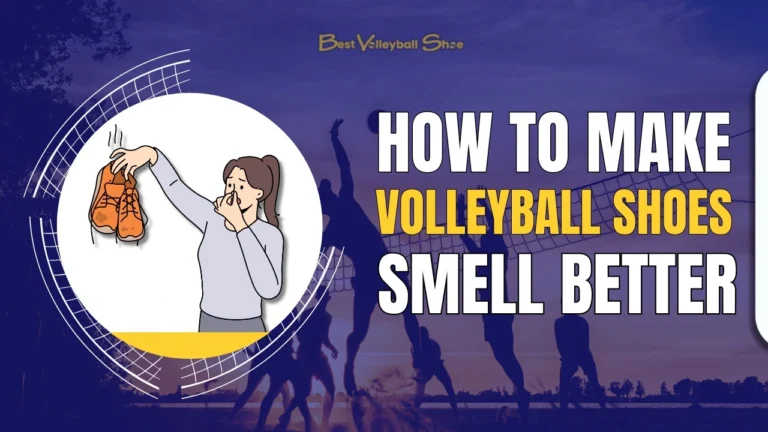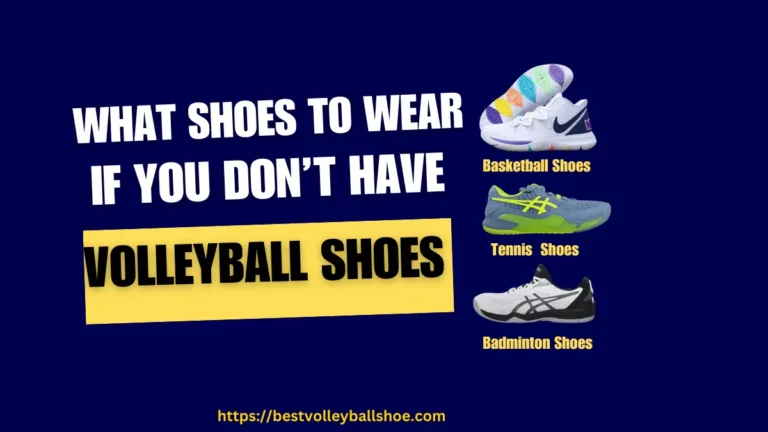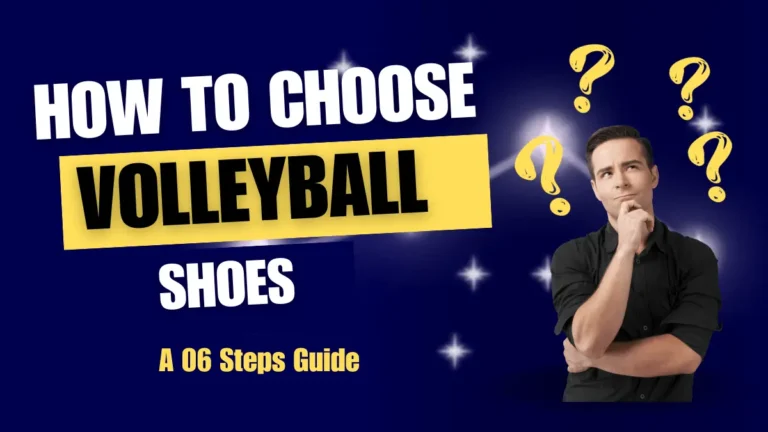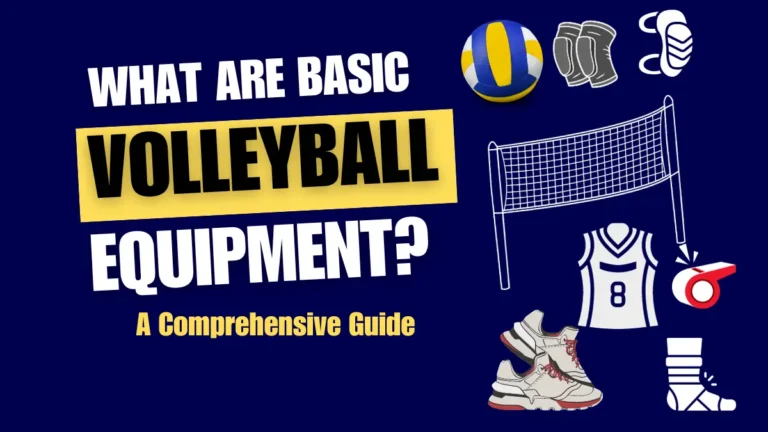What is a Rally in Volleyball? The Exciting Core of the Game
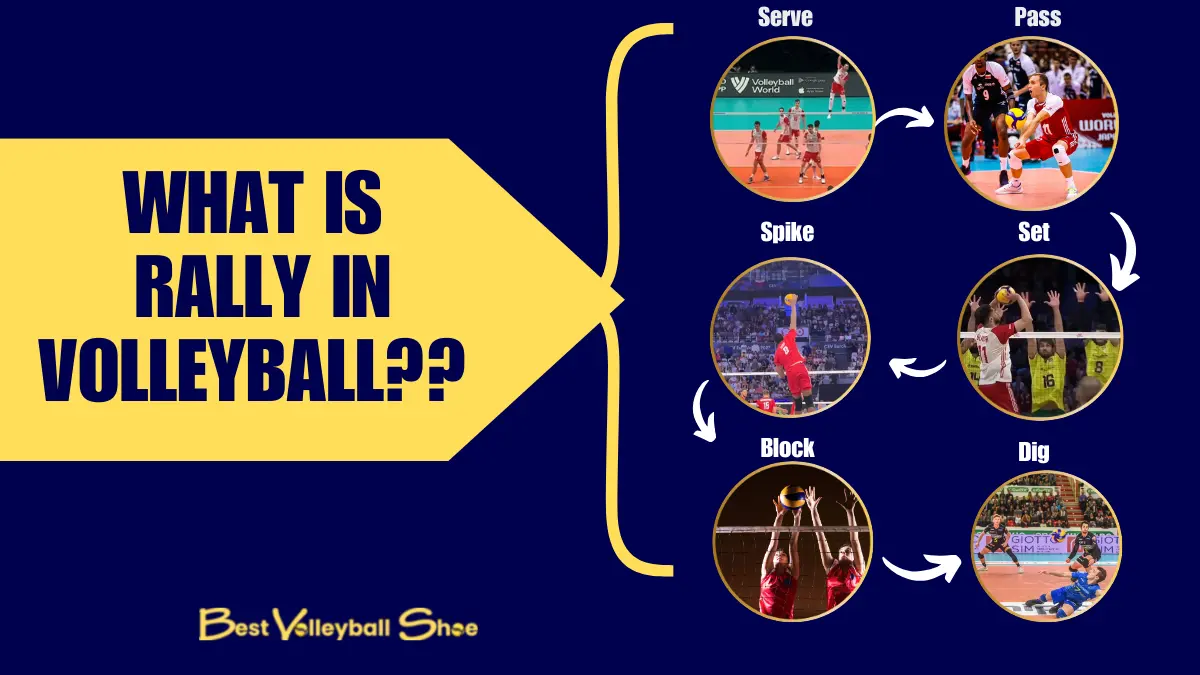
Among the numerous terms used in volleyball, some are known by fewer people. What if I introduce you to a term that can help you win impressive points within seconds? Yes, it’s possible through a “rally” in volleyball. A rally in volleyball is the play from when the ball is served until it’s considered out of play. It’s the main action where teams try to score.
This is not enough about rallies; let’s talk about what is a rally in volleyball, how to begin and end a rally, its types, importance, and how it shapes the game. If you want to know all about it, stay with the article until the end!
Basic Concept of a Rally in Volleyball?
A rally in volleyball is the period of play from the moment the server hits the ball until the ball is considered “dead” or out of play. During a rally, the ball goes back and forth between the two teams as they try to score a point.
A rally can be short, lasting just a few seconds, or long and exciting, with many impressive plays from both teams. Here are few key points about rallies
- A rally starts with a serve
- It continues until a point is scored
- Both teams can score during a rally
- Rallies are the main action in volleyball
How Does a Rally Begin?
Every rally in volleyball starts with a serve. Here’s how it happens:
- The serving team’s player stands behind the end line of the court
- They throw the ball up in the air
- The server hits the ball over the net into the other team’s court
- The receiving team tries to return the ball
Once the ball is served, the rally is officially underway. From then on, both teams will work hard to keep the ball in play and try to score a point.
What Happens During a Rally?
During a rally, players on both teams use different skills to keep the ball in the air and send it over the net. Some of the main actions you’ll see are:
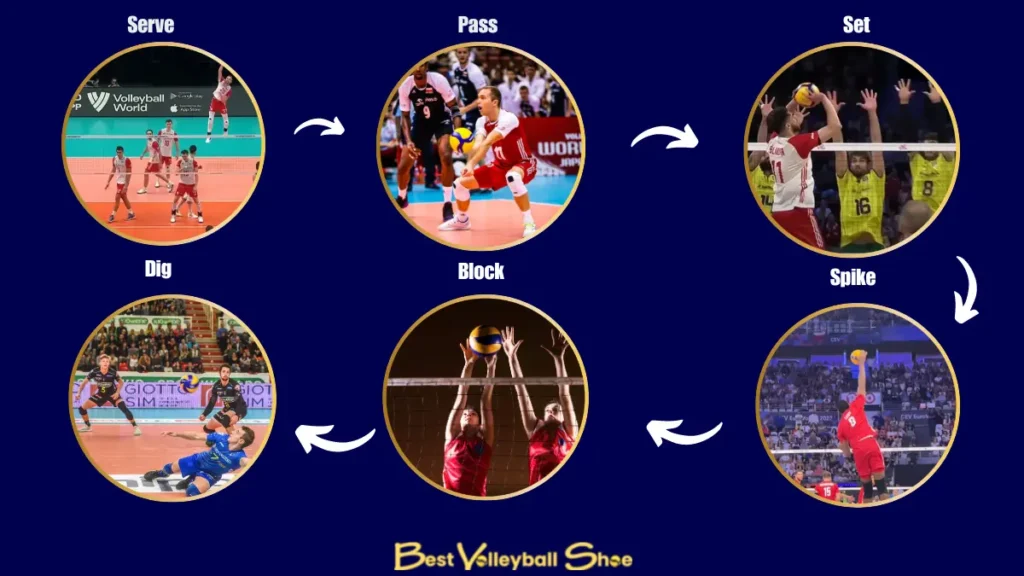
These skills come together during a rally as teams try to outsmart and outplay each other.
How Does a Rally End?
A rally in volleyball can end in several ways. Some of the most common ones are given below:
- Point scored: One team successfully hits the ball to the floor on the other team’s side.
- Out of bounds: A team hits the ball outside the court lines without the other team touching it.
- Net fault: A player touches the net during play, which is against the rules.
- Carrying: A player holds or throws the ball instead of hitting it cleanly.
- Double hit: A player hits the ball twice in a row (except when blocking).
- Four touches: A team touches the ball more than three times before sending it over the net.
When any of these things happen, the rally ends, and one of the teams is awarded a point.
Why are Rallies Important in Volleyball?
Rallies are the heart of volleyball. They’re what make the game exciting and fun to watch and play. If you want to know the reasons regarding the importance of Rallies in volleyball, let’s discuss some of them:
They Determine Scoring
In modern volleyball, points are scored using a “rally scoring” system. This means a point is awarded after every rally, regardless of which team served. This makes the game faster and more exciting.
They Show Team Skills
During a rally, teams must use all their volleyball skills together. This shows how well players can work as a team.
They Create Excitement
Long rallies with many great plays can excite players and fans. They often lead to loud cheers and celebrate the best parts of volleyball.
They Test the Endurance
Rallies can be physically demanding, especially long ones. They test how fit and focused players are.
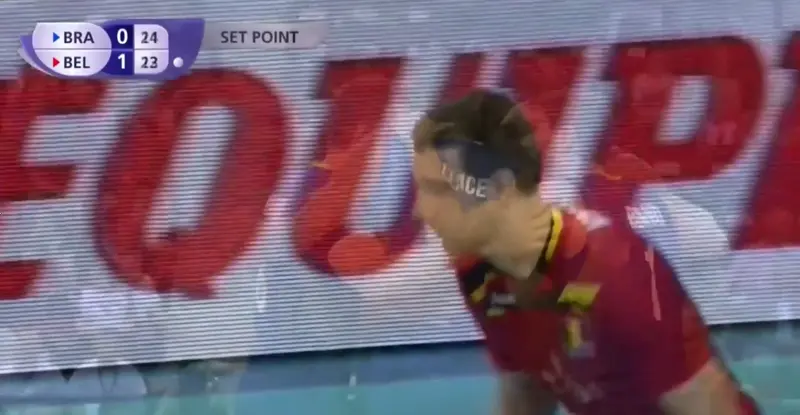
Types of Rallies in Volleyball
Volleyball rallies come in various forms, each with unique characteristics and challenges. Understanding these different types can help players improve their game strategy.
Let’s see the main types of rallies in volleyball!
Quick Rallies
These are short and fast. They might end with a strong serve that the other team can’t return or a powerful spike that immediately scores.
Long Rallies
These rallies last a while, with many touches and exciting saves. They often get fans very excited and show off the players’ skills.
Defensive Rallies
Both teams play very carefully in these rallies, trying not to make mistakes. There might be lots of digs and saves.
Offensive Rallies
These rallies have many attacking plays, with both teams trying to score quickly with strong hits.
Strategies for Winning Rallies
Winning rallies is crucial for success in volleyball matches and overall performance. Effective strategies can give teams an edge in securing points during play. Key strategies for winning rallies in volleyball are the following
Serve Aggressively
A strong, well-placed serve can make it hard for the other team to return the ball, potentially ending the rally quickly.
Control the First Touch
If a team can pass the ball well after the serve, they have a better chance of setting up a good attack.
Use Different Attacks
Mixing up the types of attacks (hard spikes, soft tips, etc.) can keep the other team guessing.
Block Effectively
Good blocking can stop other teams’ attacks and even score points directly.
Stay Focused
Long rallies test players’ concentration. Staying focused can help a team avoid mistakes and win the point.
How Rallies Affect the Flow of the Game?
Rallies do more than just determine who scores points. They also affect how the whole game feels and flows:
Setting the Pace
Quick rallies can make the game fast and intense, while longer rallies might slow things down and build tension.
Momentum Shifts
Winning a long, hard-fought rally can give a team a boost of energy and confidence, potentially changing the course of the game.
Tactical Adjustments
Coaches and players often use what they learn during rallies to adjust their strategies as the game goes on.
Player Rotations
In volleyball, players rotate positions after their team wins a rally and gains the serve. This keeps the game dynamic and tests players’ versatility.
Rallies in Different Forms of Volleyball
While the basic idea of a rally is the same, there are some differences in how they work in various types of volleyball:
Indoor Volleyball
This is the most common form, played in gyms and sports halls. Due to the hard court surface, rallies here can be fast-paced.
Beach Volleyball
Played on sand with two players per team. In this game, rallies might be slower but require more effort due to the challenging surface.
Sitting Volleyball
A Paralympic sport where players must keep contact with the floor. Rallies here showcase incredible reflexes and upper-body strength.
Training for Better Rally Performance
To improve at winning rallies, volleyball players and teams focus on several areas in their training. By practicing a lot, a stage comes when an error-free outcome starts to be achieved. Some of the pre-rally playing exercises include:
The Evolution of Rally Scoring in Volleyball
If we look at the beginning of the concept of rally scoring in volleyball, it was not included from the very first day. This means that volleyball hasn’t always used the rally scoring system we see today. Here’s a brief history:
- Side-out Scoring: Originally, teams could only score when they had the serve. Rallies won by the receiving team just gave them the right to serve.
- Introduction of Rally Scoring: In the 1980s, rally scoring (where every rally results in a point) was introduced in some competitions.
- Official Adoption: In 2000, the International Volleyball Federation (FIVB) officially adopted rally scoring for all levels of play.
This change made games faster and more exciting, as every rally became crucial for scoring.
Final Thoughts
Rallies are at the core of what makes volleyball such an exciting and dynamic sport. From the moment the server hits the ball until a point is scored, rallies showcase the skills, teamwork, and excitement that volleyball is all about. Whether you’re a player looking to improve your game or a fan wanting to understand the sport better, knowing about rallies is key to appreciating volleyball fully.
Remember, every time you watch or play volleyball, you see rallies in action. Each one is a mini-battle, a chance for teams to show their skills and fight for a point. So the next time someone asks you, “What is a rally in volleyball?” You’ll be able to give them a complete and exciting answer!
Frequently Asked Questions
How long does a typical rally last in volleyball?
A typical rally in volleyball can last anywhere from a few seconds to over a minute. Short rallies might end after just one or two touches, while longer, more exciting rallies can involve multiple team exchanges.
Can a team score during any part of a rally?
Yes, in modern volleyball, using rally scoring, a team can score a point at any time during a rally, regardless of which team served. This means that both the serving and receiving teams have an equal opportunity to score at every rally.
What’s the maximum number of times a team can touch the ball during a rally?
In standard volleyball rules, a team is allowed a maximum of three touches before sending the ball over the net to the opposing team’s side. The only exception is when a player makes a block at the net, which doesn’t count as one of the three touches.
Does a rally always start with a serve?
Yes, every rally in an official volleyball match begins with a serve. The serve is the action that puts the ball into play, starting the rally. Even if the serve has a fault (like hitting the net), it’s still considered the beginning of a rally.
Can a rally continue if the ball touches the net?
Yes, a rally can continue if the ball touches the net, as long as it wasn’t during the serve. During regular play in a rally, if the ball touches the net and goes over to the opponent’s side, play continues.
